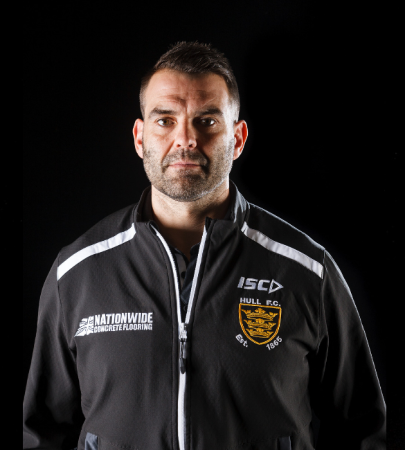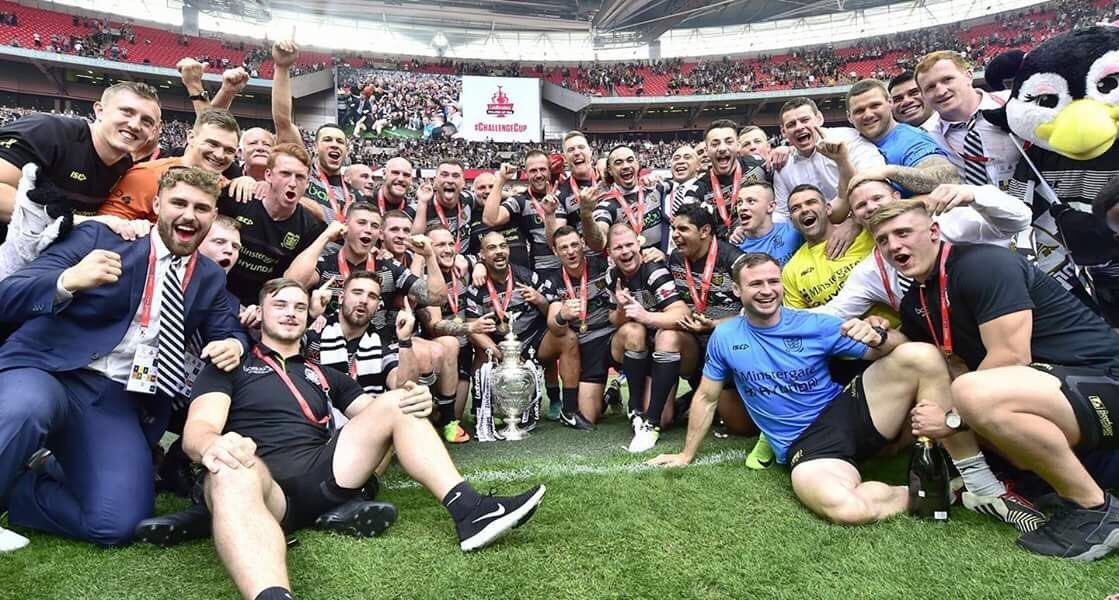
Paul Hatton, Head of High Performance, Hull FC Rugby Club
Paul joined Hull FC in 2016, overseeing all medical and conditioning aspects of training within the first team squad. In his first season at the club, Hull FC won the Challenge Cup at Wembley, the first silverware for the club in 11 years, and Paul was named Clubman of the Year.
This was followed up in 2017 with a second consecutive Challenge Cup victory.
In the words of Hull Daily Mail: “There is no coincidence that Hull FC having their most influential players available for the big knockout matches has resulted in silverware.”
First things first, how were those two amazing finals at Wembley where you helped Hull FC win back-to-back Challenge Cups?
I was extremely proud to be a part of it. Wembley is an amazing venue, and for a club of our history to have never won the Challenge Cup there before was a wrong that we were very glad to put right. Our supporters have such a strong affinity with the ground, and to record back-to-back wins there was really special.
So how did the ithlete Team System help you on the Road to Wembley?
We began researching options for HRV measurement back in 2013. I knew HRV was an important new development in sports performance, and it was during this research that we first became aware of ithlete. That was when I spoke to Simon Wegerif and began to realise its enormous potential. As soon as we began using it, we were very happy with the results.
And how did the players respond to the need of taking daily HRV measurements?
We have a squad of 39 players, and we needed to get everyone on board. I gave a presentation about why everyone in the squad needed to take regular HRV measurements, and why we needed everyone to get into the habit of doing this every morning when they wake up. The lads have been pretty good about it to be honest – there were only the occasional text messages that had to be sent by way of reminder!
We’ve now made some changes around the routine of how we ask our players to measure their HRV, so now everyone takes their measurements when they first come in, after a roll, a stretch and some breathing exercises. It’s still each individual player’s responsibility to take their measurements, but it means we can manage the environment in which the testing takes place, and it has become an integral part of our daily training regime.”

What do you see as the benefits of HRV measurement?
Rugby is a very physical sport. Matchdays are intense, and at the height of the season the games come thick and fast. We’ve played 74 games over the past couple of seasons. And then we ask the players to attend training sessions four times a week. We use HRV monitoring techniques to manage the training load across the team. If a player is ‘green’, we know we can push him a little harder, but if he’s ‘amber’ then the intensity of his training session will be reduced. Similarly, if it’s ‘red’, then we’ll put the player into recovery.
Do HRV measurements allow you to understand your players better?
I’m a greater believer in having strong communication with all our players – it’s not about relying on technology to inform us about what’s going on inside their bodies or inside their heads.
But we have a large squad, and it’s not practical to have one-to-ones with each player every day. If a player’s HRV measurements are fluctuating outside of their usual parameters, that prompts us to take him to one side and ask about his general health and life outside the club.
And it’s never just about their physicality. Sometimes a player may not be getting enough sleep because they have a new-born baby, for example. Other times there could be exam stress due to a college course. Or it can be emotional stress as a result of something that’s happening in their personal lives. It’s always good to understand the reasons behind significant variations in HRV. There are many factors at play and it’s never down to one thing alone, but there’s no doubt that ithlete has made a positive contribution to the culture at our club.

And has ithlete had an impact on reducing player injury levels?
Over the past two seasons, our player availability has been in excess of 90%, which is a big increase on where it was before, and this has been very pleasing. There’s a multitude of reasons behind this, but HRV measurement has definitely been one.
